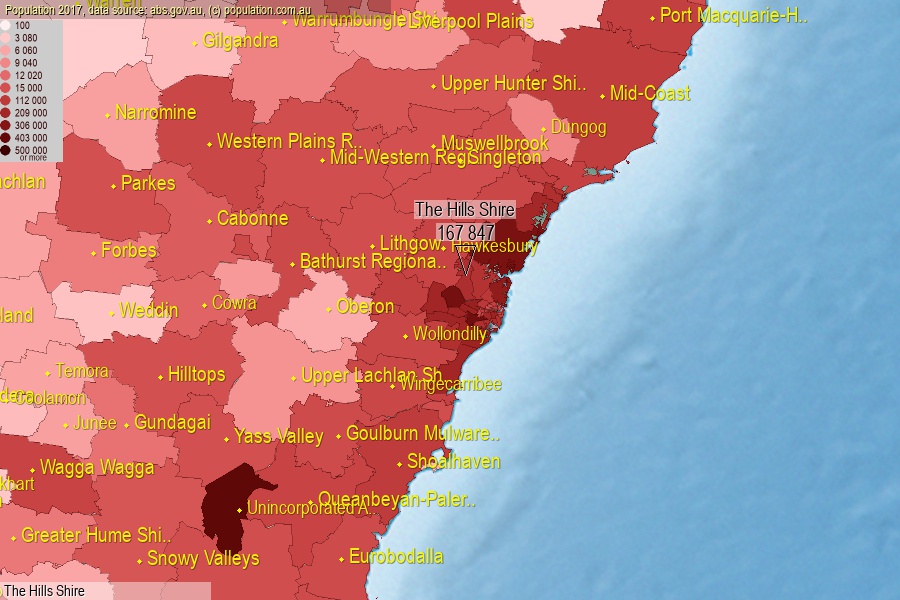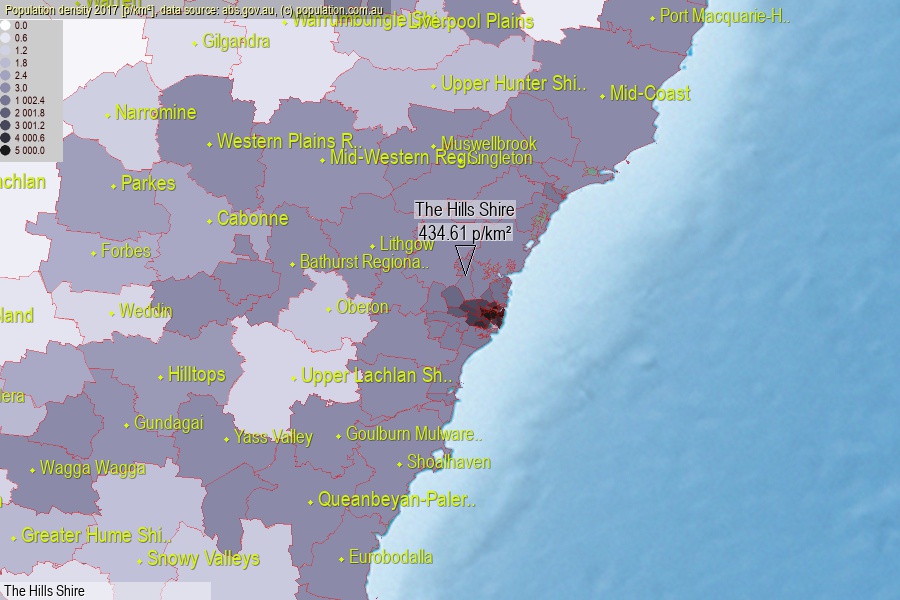 population.com.au
population.com.auLast official estimated population of The Hills Shire Area (as Local Government Area) was 167 847 people (on 2017-06-30)[2]. This was 0.68% of total Australian population and 2.11% of NSW population. Area of The Hills Shire is 386.20 km², in this year population density was 434.61 p/km² . If population growth rate would be same as in period 2016-2017 (+2.99%/yr), The Hills Shire population in 2025 would be 212 449. [0]



Click to enlarge. The Hills Shire is located in the center of the images.
Population [people], population density [p./km²] and population change [%/year] [2]
[2001-2002] +4.24 %/Y
[2002-2003] +3.62 %/Y
[2003-2004] +2.71 %/Y
[2004-2005] +2.37 %/Y
[2005-2006] +2.10 %/Y
[2006-2007] +1.48 %/Y
[2007-2008] +2.32 %/Y
[2008-2009] +2.24 %/Y
[2009-2010] +1.29 %/Y
[2010-2011] +1.05 %/Y
[2011-2012] +1.46 %/Y
[2012-2013] +1.66 %/Y
[2013-2014] +1.93 %/Y
[2014-2015] +2.30 %/Y
[2015-2016] +2.54 %/Y
[2016-2017] +2.99 %/Y
[0] Calculated with linear interpolation from officially estimated population
[1] Read more about LGA and Australian Statistical Geography Standard (ASGS) on abs.gov.au
[2] Population data from Australian Bureau of Statistics (Population and density: 2017; change: 2016-2017)
[3] Digital Boundaries: Australian Statistical Geography Standard (ASGS) 2016.